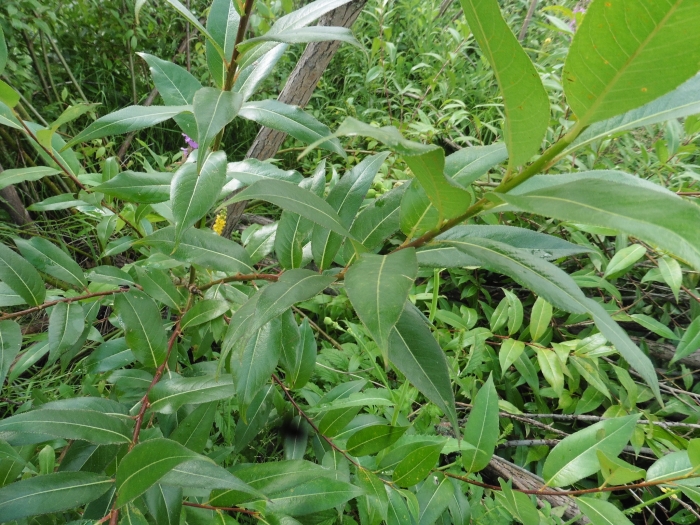Bay Willow
(Salix pentandra)
Bay Willow (Salix pentandra)
/
/

By Силаева Татьяна Борисовна no rights reserved
Public Domain
Image By:
By Силаева Татьяна Борисовна no rights reserved
Recorded By:
Copyright:
Public Domain
Copyright Notice:
Photo by: By Силаева Татьяна Борисовна no rights reserved | License Type: Public Domain | License URL: http://creativecommons.org/publicdomain/zero/1.0/ | Uploader: tbsilaeva | Publisher: iNaturalist |






















































Estimated Native Range
Summary
Salix pentandra, commonly known as Bay Willow, is a deciduous tree native to riparian zones, wetlands, and moist forests across Europe and Asia. It can reach a height of 14 meters (46 feet) and thrives in its natural habitat along riverbanks and in wet, boggy ground. The Bay Willow is characterized by its glossy, lance-shaped leaves and its bark, which is smooth and gray when young, becoming fissured with age. The flowers are dioecious catkins, with male catkins displaying a bright yellow color, 2–5 cm long, and female catkins being greenish, 1.5–3 cm long. Flowering occurs in late spring, shortly after the leaves emerge. The fruit is a small capsule, which releases numerous minute seeds surrounded by white down, facilitating wind dispersal.
The Bay Willow is valued for its early-season nectar and pollen, making it an important source of food for bees and other insects. Its catkins are not only crucial for wildlife but also add ornamental interest. This species is suitable for wetland restoration projects and can be used in garden settings where soil moisture is consistently high. It requires full sun to thrive and prefers soils with slow or standing drainage. While it is a beautiful and ecologically beneficial tree, Salix pentandra can be invasive outside its native range, particularly in parts of the United States, and should be planted with caution.CC BY-SA 4.0
The Bay Willow is valued for its early-season nectar and pollen, making it an important source of food for bees and other insects. Its catkins are not only crucial for wildlife but also add ornamental interest. This species is suitable for wetland restoration projects and can be used in garden settings where soil moisture is consistently high. It requires full sun to thrive and prefers soils with slow or standing drainage. While it is a beautiful and ecologically beneficial tree, Salix pentandra can be invasive outside its native range, particularly in parts of the United States, and should be planted with caution.CC BY-SA 4.0
Plant Description
- Plant Type: Tree
- Height: 15-50 feet
- Width: 15-25 feet
- Growth Rate: Rapid
- Flower Color: N/A
- Flowering Season: Summer
- Leaf Retention: Deciduous
Growth Requirements
- Sun: Full Sun
- Water: High
- Drainage: Slow, Standing
Common Uses
Bee Garden, Bird Garden, Butterfly Garden, Deer Resistant, Erosion Control, Fire Resistant, Hedges, Salt Tolerant, Water Garden
Natural Habitat
Native to riparian zones, wetlands, and moist forests across Europe and Asia
Other Names
Common Names: Laurel Willow, Bay-Leaved Willow, Laurel-Leaved Willow, Femhannet Pil, Lorbeerweide, Lorbeer-Weide, Halava, Saule Laurier, Saule À Cinq Étamines, Istervier
Scientific Names: , Salix fragilis, Salix pentandra, Salix hermaphroditica, Salix ×pentandroides, Salix fissa, Salix laurifolia, Salix friesii, Salix pentandra var. angustifolia, Salix pokornyi
GBIF Accepted Name: Salix pentandra L.